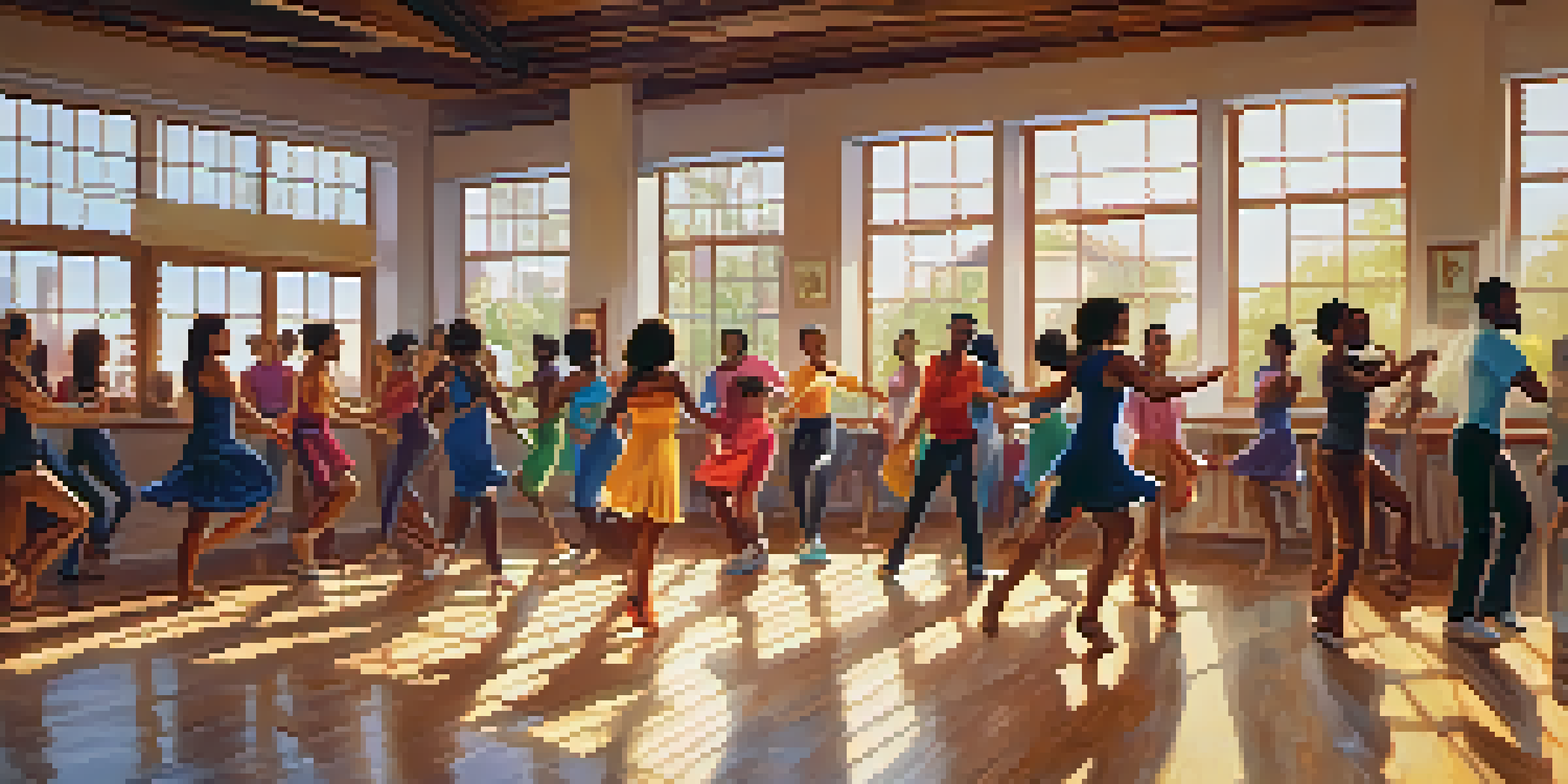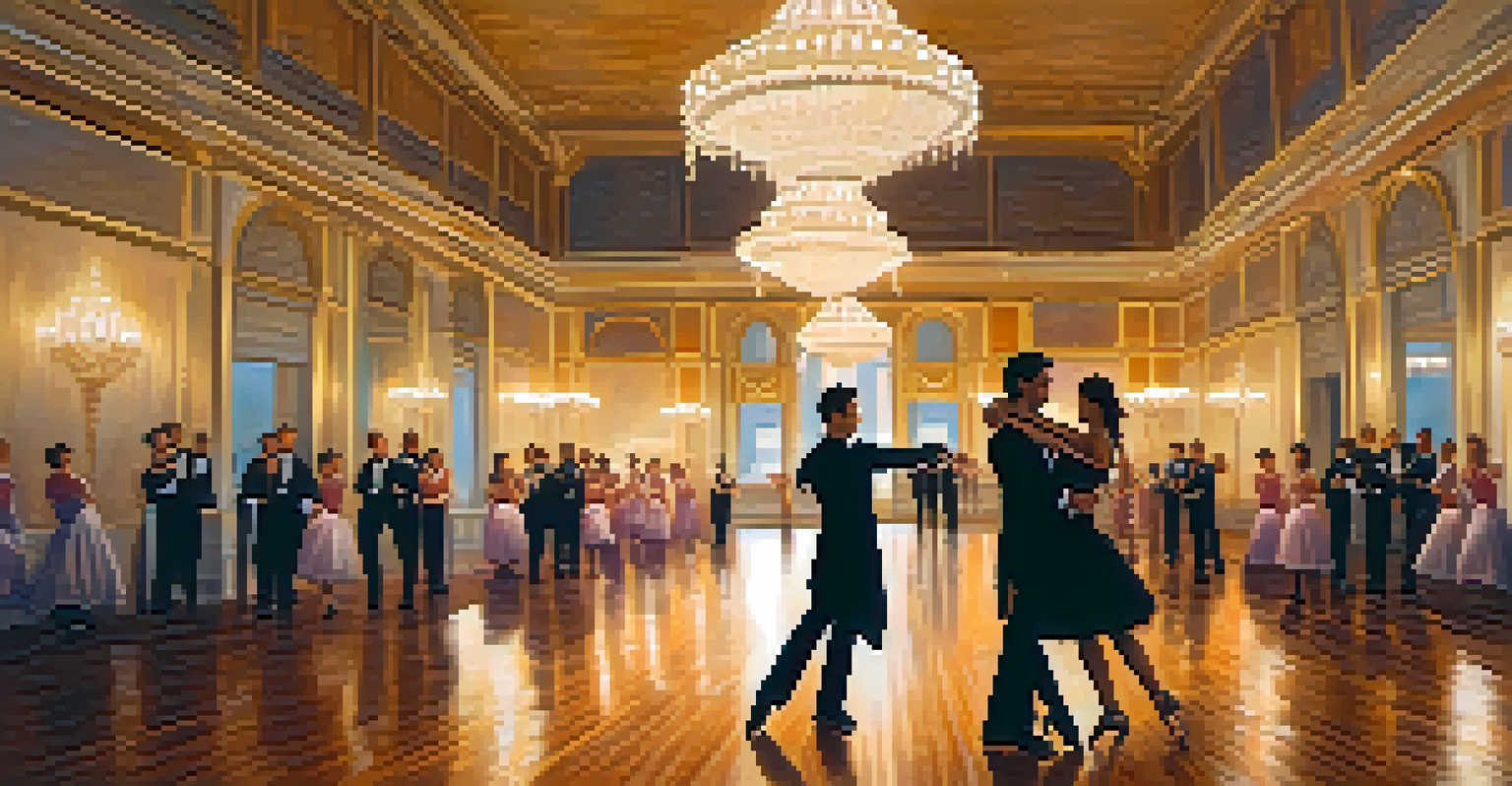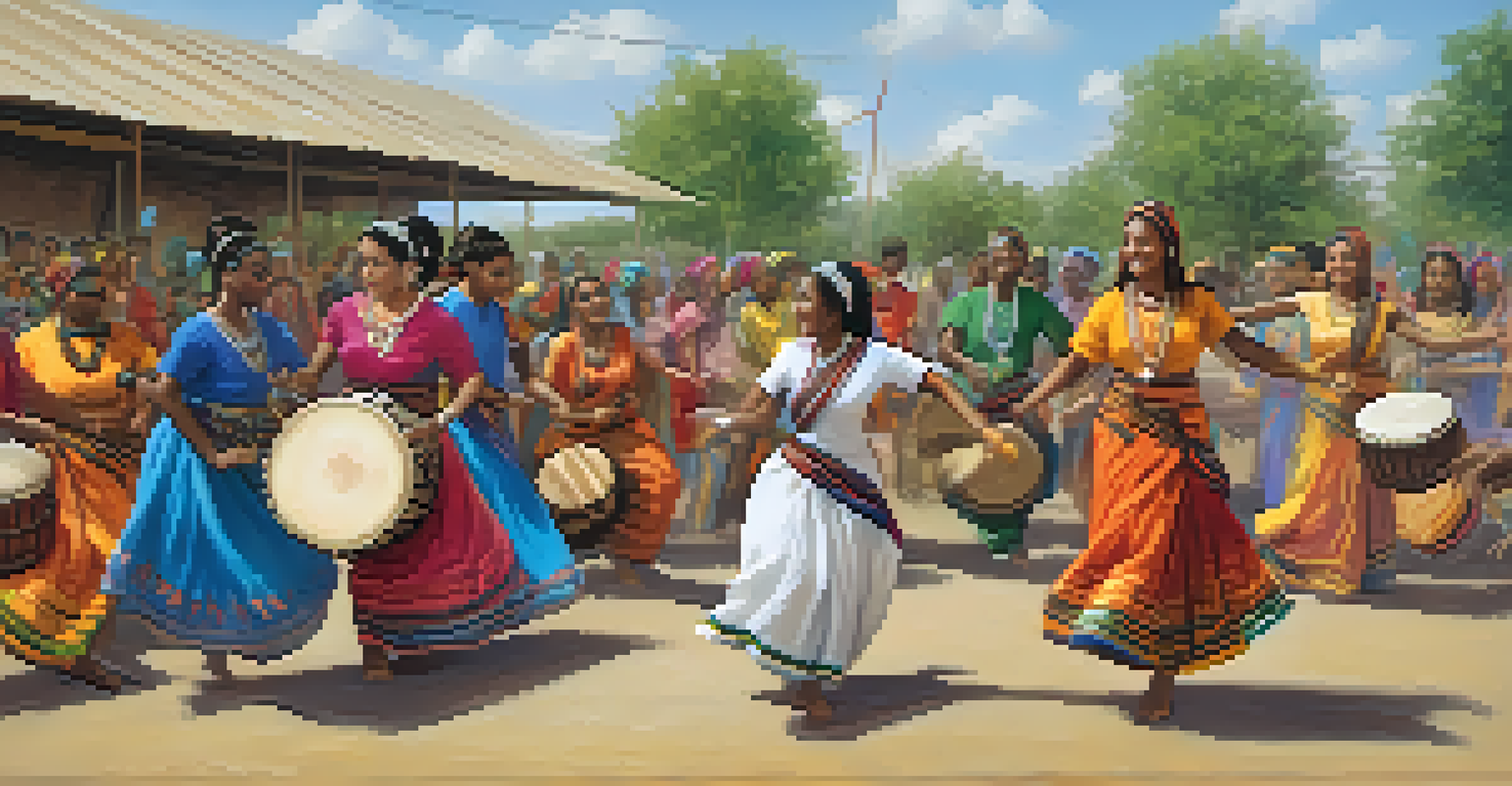The Role of Dance in Enhancing Interpersonal Relationships

Understanding Dance as a Universal Language
Dance is often described as a universal language, transcending cultural and linguistic barriers. When people come together to dance, they communicate emotions and stories without saying a word. This shared experience can create a sense of belonging and community, making it easier for individuals to connect.
Dance is the hidden language of the soul.
For instance, think about a lively salsa class where everyone is encouraged to express themselves. In that environment, participants often find it easier to strike up conversations and form friendships, as they are united by the rhythm and movement. It's this non-verbal communication that lays the groundwork for deeper interpersonal relationships.
Ultimately, when people engage in dance, they are participating in a form of expression that fosters understanding and empathy. This connection can lead to lasting bonds, as individuals learn to appreciate each other’s backgrounds and stories through the art of movement.
Dance as a Tool for Team Building
In many settings, from corporate environments to sports teams, dance can serve as a powerful team-building tool. Engaging in group dance activities encourages collaboration and trust among participants. When individuals must work together to learn choreography or synchronize their movements, they build a sense of camaraderie.

Consider a team retreat where employees engage in a group dance workshop. As they learn to coordinate their steps, they also learn to rely on each other, fostering open communication and teamwork. This shared challenge can break down barriers and create a supportive atmosphere that enhances interpersonal relationships.
Dance Fosters Emotional Connections
Engaging in dance allows individuals to share emotions and experiences, deepening their interpersonal bonds.
Moreover, dance promotes fun and spontaneity, which can lighten the mood in a workplace or team dynamic. By incorporating playful movement, team members are more likely to bond over shared laughter and experiences, ultimately leading to stronger, more meaningful connections.
Enhancing Emotional Connections Through Dance
Dance is not just about movement; it’s also deeply tied to our emotions. When people dance together, they often share feelings of joy, excitement, and even vulnerability. This emotional sharing can create an intimate bond between participants, as they experience highs and lows together through the rhythm.
Dancing is like dreaming with your feet!
Take, for example, a couple participating in a ballroom dance class. As they navigate through the steps, they learn to rely on one another not just physically, but emotionally as well. This connection deepens their relationship, allowing them to express affection and support in a way that words often cannot.
By moving together, partners can express emotions and build a deeper understanding of each other's feelings. This shared experience of vulnerability can lead to increased trust, which is essential for any strong relationship.
Cultural Exchange and Understanding Through Dance
Dance is a beautiful representation of cultural heritage, allowing individuals to explore and appreciate diverse backgrounds. When people participate in dances from different cultures, they gain insights into the values, beliefs, and traditions of others. This cultural exchange enriches interpersonal relationships and fosters mutual respect.
For instance, a community dance event that features various cultural styles—like African drumming or Indian classical dance—encourages participants to learn from one another. As they engage with these new forms of expression, they also gain a greater understanding of the communities behind them.
Cultural Understanding Through Dance
Participating in dances from different cultures promotes appreciation for diversity and enriches relationships.
This appreciation for diversity not only enhances personal relationships but also encourages a more inclusive society. By embracing different cultures through dance, individuals can forge connections that celebrate differences rather than divide us.
Dance as a Means of Conflict Resolution
Interestingly, dance can also play a role in conflict resolution, providing a creative outlet for expressing and resolving tensions. When individuals engage in dance, they often find common ground, allowing for healing and reconciliation. This can be particularly effective in group settings where misunderstandings may arise.
Imagine a community workshop that incorporates dance therapy to address local conflicts. Participants may initially come with differing viewpoints, but as they move together, they begin to empathize with one another's perspectives. The physical act of dancing can help to release tension and foster a shared sense of purpose.
Through this process, individuals can learn to navigate their differences in a constructive manner. Dance becomes a bridge that facilitates communication and understanding, ultimately enhancing interpersonal relationships even in challenging circumstances.
The Therapeutic Benefits of Dance for Relationships
Dance therapy has gained recognition for its ability to improve mental health and well-being, which in turn can strengthen interpersonal relationships. Engaging in dance can help individuals express their emotions, reduce stress, and improve overall mood. When people feel better about themselves, they are more likely to connect positively with others.
For example, someone who attends a dance class to cope with anxiety may find that the supportive environment allows them to forge new friendships. As they express themselves through movement, they also learn to open up to others, creating bonds based on shared experiences and understanding.
Dance as Conflict Resolution
Dance can serve as a creative outlet for resolving tensions, helping individuals empathize and communicate better.
Moreover, dance provides a fun and creative way to connect with others, making it easier to build relationships. By investing in their own emotional health through dance, individuals can cultivate healthier connections with those around them.
Creating Lasting Memories Through Dance
One of the most beautiful aspects of dance is its ability to create lasting memories. Whether it's a wedding, a family gathering, or a community festival, dance often takes center stage, bringing people together in celebration. These shared experiences become cherished memories that strengthen interpersonal ties.
Think back to a joyful family reunion where everyone hits the dance floor. The laughter, the music, and the shared movements create an atmosphere of joy that is hard to forget. As family members dance together, they bond over the shared experience, creating stories that will be recounted for years to come.

These memorable moments foster a sense of belonging and connection that enhances relationships. By incorporating dance into significant life events, we can celebrate our connections and create a legacy of joy and togetherness.
Conclusion: The Lasting Impact of Dance on Relationships
In summary, dance is more than just a series of movements; it is a powerful tool for enhancing interpersonal relationships. From fostering emotional connections to promoting cultural understanding, the benefits of dance extend far beyond the dance floor. It offers individuals the opportunity to communicate, bond, and grow together.
As we explore the various ways dance influences our relationships, it becomes clear that it is a vital part of our social fabric. By embracing dance in our lives, we open ourselves up to new experiences and connections that can enrich our personal and communal interactions.
Ultimately, whether it's through a choreographed routine or a spontaneous dance party, the act of moving together can create a profound impact on our relationships, reminding us of the joy that comes from connection and shared experiences.